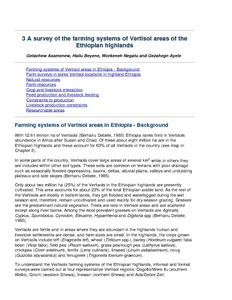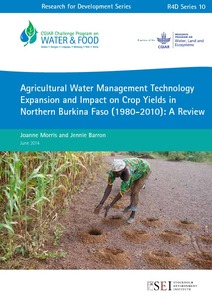A survey of the farming systems of Vertisol areas of the Ethiopian highlands
In 1986, ILCA carried out informal surveys at Dogollo and Inewari in order to understand the farming systems. Such surveys were also conducted by the Institute of Agricultural Research (IAR) at Ginchi in 1986 and by the Alemaya University of Agriculture at Ada/Debre Zeit in 1988/89. This was followed by one-time detailed formal farm surveys at Dogollo, Inewari and Ginchi in 1988/89. This chapter mostly presents the results of these formal surveys.












